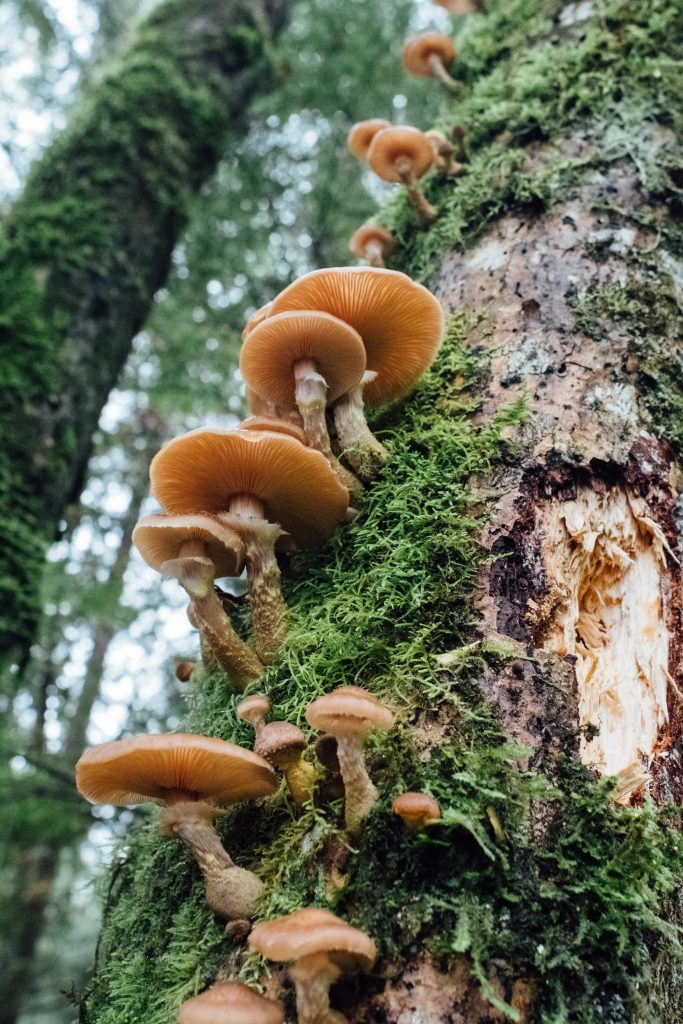Unraveling Earth’s Stories, Championing Sustainable Futures.

The Power of Fungi in Restoring the Land

Healthy soil is crucial for supporting plant and animal life, regulating water flow, and even mitigating climate change. In recent years, soil degradation has become a major concern worldwide, threatening food security and environmental sustainability. However, there is hope – an unlikely hero has emerged that could play a vital role in restoring our soils: fungi. This article will explore the ways fungi contribute to soil regeneration, from forming symbiotic relationships with plants to stabilizing soil aggregates. Read on to learn how leveraging the power of fungi could help bring new life to degraded lands across the globe.
Key Roles of Fungi in Soil:
- Decompose organic matter and recycle nutrients
- Form soil aggregates that improve soil structure
- Form symbiotic mycorrhizal relationships with plants
- Transport water and nutrients to plants
- Drive soil nutrient cycling
The Complex and Vital Role of Fungi in Soil Ecosystems
Fungi play several critical roles within soil systems. As decomposers, fungi break down organic matter, recycling nutrients and releasing them back to the soil to support plant and microbial life. Fungal hyphae also help bind soil particles together to form aggregates, improving soil structure and stability. These aggregates support the formation of pores for air and water flow and provide protected microsites for nutrient transformations. Furthermore, fungi form symbiotic mycorrhizal associations with over 80% of plant families, greatly expanding the root surface area for water and nutrient absorption. Mycorrhizal fungi also transport nutrients like phosphorus from the soil to the host plant. Overall, fungi drive soil nutrient cycling and are crucial architects of fertile, productive soils.
The Next Frontier in Soil Restoration
Fungi have great but untapped potential to rapidly restore the world’s degraded soils and landscapes. Yet many gaps remain in our understanding of fungal ecology and applications. Developing strategies to characterize and monitor fungi within soils will be integral to harnessing their benefits. Exploring how different fungal species catalyze distinct restoration processes could refine management approaches as well. Moving forward, interdisciplinary collaboration will be critical to unleash the fungal toolbox for soil restoration and create a future of healthy, vibrant soils.
Fungi as Agents of Soil Recovery
Given their multifunctional roles, fungi are well equipped to aid in restoring soils degraded by erosion, intensive agriculture, pollution, and other human impacts. Manipulating fungi in soils can accelerate natural regeneration processes. For example, adding beneficial saprotrophic fungi boosts organic matter decomposition and humus formation, replenishing diminished nutrient pools. Mycorrhizal inoculants can be introduced to promote symbiotic links between plants and fungi, enhancing vegetation establishment and growth on damaged lands. Additionally, fungal exudates help stabilize soil aggregates on vulnerable, exposed soils. Overall, integrating fungi into restoration initiatives through revegetation, tillage practices, and amendments can jumpstart rehabilitation of degraded soils.
| Fungal Group | Role in Soil Restoration |
|---|---|
| Saprotrophic fungi | Accelerate decomposition and replenish nutrients |
| Mycorrhizal fungi | Enhance plant establishment and growth |
| Fungal exudates | Stabilize soil aggregates |
Potential Methods to Harness the Power of Fungi
There are several practical strategies that can leverage fungi to speed up soil recovery. First, minimizing tillage and utilizing cover crops helps preserve the intricate fungal networks within soil. Switching to organic fertilizers instead of synthetic ones also nurtures fungal communities. Inoculating seeds or soils directly with mycorrhizal fungi, organic composts containing fungi, or fungal exudates improves plant survival and growth for re-vegetation projects. Such soil amendments introduce beneficial fungi while enhancing soil fertility. Additionally, selecting native plant species that associate with mycorrhizal fungi maximizes symbiotic relationships in the restored site. Overall, thoughtful management of fungi aboveground and below can amplify their contributions to soil regeneration.
The Next Frontier in Soil Restoration
Fungi have great but untapped potential to rapidly restore the world’s degraded soils and landscapes. Yet many gaps remain in our understanding of fungal ecology and applications. Developing strategies to characterize and monitor fungi within soils will be integral to harnessing their benefits. Exploring how different fungal species catalyze distinct restoration processes could refine management approaches as well. Moving forward, interdisciplinary collaboration will be critical to unleash the fungal toolbox for soil restoration and create a future of healthy, vibrant soils.
To conclude, fungi are truly the hidden heroes working tirelessly to rebuild and maintain the fertility of our soils. By filling diverse functional roles from decomposers and plant symbionts to ecosystem engineers, fungi drive crucial nutrient cycling and soil aggregation processes that underpin productive soils. Yet many of these fungal gifts have been squandered through human mismanagement of soils across the globe. Restoring fungal activity and ecology provides an inexpensive, natural pathway to rehabilitate degraded soils. With thoughtful guidance – reducing tillage, inoculating with beneficial fungi, and choosing complementary plants – we can enlist fungi as allies in renewing soil health worldwide and securing a bountiful future for generations to come.

OUR PARTNER

UKClubSport, as a dedicated partner, offers unparalleled insights into Australia A League matches, allowing fans to stay close to the action with comprehensive coverage. Their expertise ensures enthusiasts never miss a moment of excitement from the pitch.
Call us
Got questions or insights? Let’s connect!
[email protected]




